Walter Frevert, Goering's huntsman
The names of many famous people of both the German Empire and the Third Reich are associated with Rominta. The chief forester of the Rominta Forest, the famous hunter, ranger and writer Walter Frevert also wrote his name into history, although he left an unkind memory of himself…
Walter Frevert was born on October 13, 1897, into the family of a dentist and landowner, Gustav Frevert. Thanks to the influence of his uncle, chief forester Wilhelm Frevert, Walter also chose the work of a forester as his profession.
After the outbreak of World War I, he volunteered for the 1st Kurhessen Field Artillery Regiment and took part in the battles near Verdun. He was wounded twice. He was awarded the Iron Cross, 1st Class .
After the end of the First World War, in the autumn of 1918, he began training as a forester, passed the trainee exam in 1922, and in 1924 the Great State Exam, after which he received the title of forester. From April of the same year, he worked as an assistant forester in the Wolfgang forestry district (Hesse). From March 1928 until the end of November 1936, he worked as chief forester in the Battenberg forestry district (Hesse), where, among other things, he was engaged in breeding hunting dogs of the Hanoverian hound breed.
From May 1, 1933 he was a member of the NSDAP, and from the summer of 1933 also of the SA storm troop reserve.
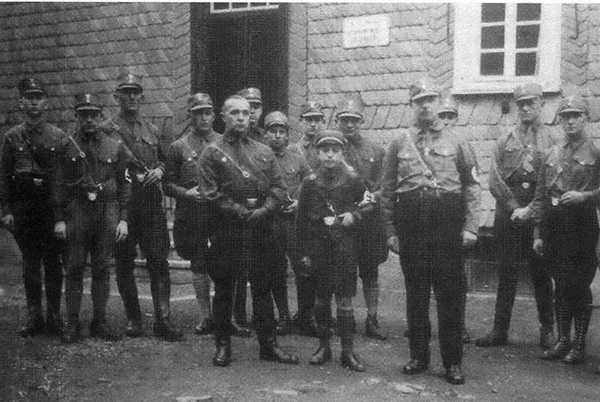
From December 1936 he headed the Nassawen forestry in the Romincka Forest. From April 1, 1938 he became the chief forestry inspector of the Romincka Forest, replacing Ferdinand Wallmann, who was transferred to Hanover. From December 1, 1938 he was promoted to chief forester.
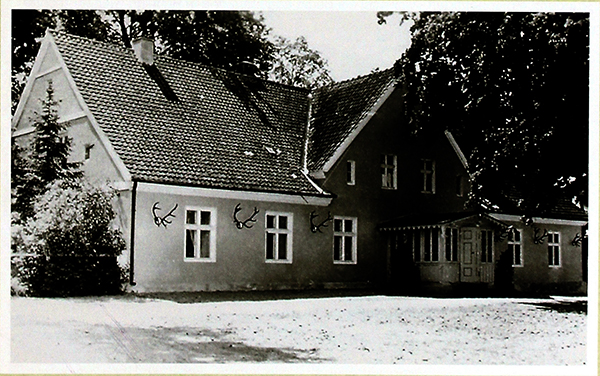
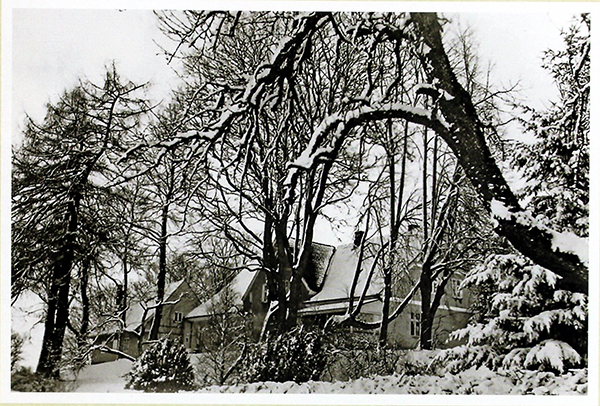
At the beginning of the Polish campaign, he was enlisted in the reserves of the 1st Cavalry Brigade as commander of an artillery division, where he served until the beginning of December 1939, after which he was demobilized and returned to Nassauen.
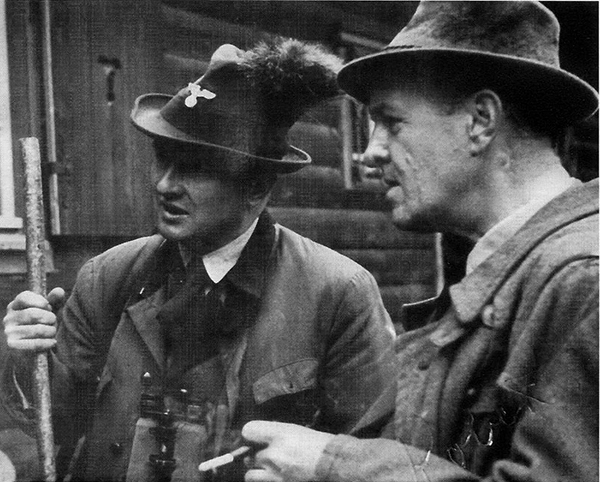
Frevert had a relationship with the widow of his former colleague, forester Paul Barkhausen , 24-year-old Heinke Barkhausen (1916–1997). Frevert's wife Gertrud, upon learning of this, shot herself with her husband's rifle in October 1940. Gertrud Frevert's grave is in the foresters' cemetery in Nassaven, on the Katharinenberg mountain. Frevert later married Heinke.

Frevert's main activity in the Romincka Forest, along with caring for the forestry, was organizing hunts for high-ranking guests of the Third Reich's forestry director Hermann Goering. According to Frevert's own memoirs, he organized receptions for the British ambassador N. Henderson, the king of Bulgaria Boris and numerous diplomats, aristocrats, politicians and high-ranking members of the NSDAP.
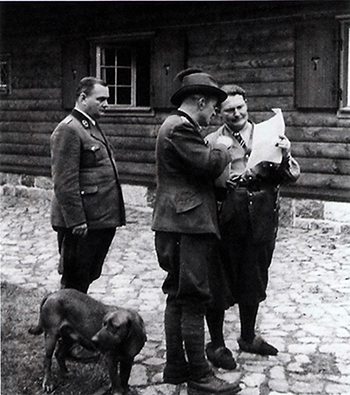
In 1943, Frevert was promoted to the rank of reserve major.
Nazi ideology did not bypass such an area as hunting and game management. As early as 1941, Goering issued an order to expand the territory of the imperial reserve Romincka Forest by 20,000 hectares at the expense of Polish lands captured by Germany during the Polish campaign. Residents of 10 Polish villages were evicted from the territory of the established forestry Adlersfelde .
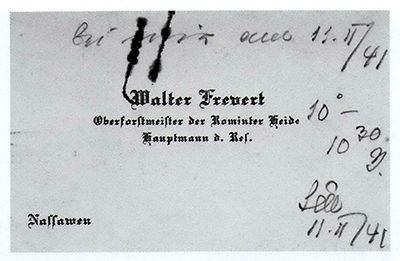
In the first days after Germany's attack on the USSR, Frevert was in the active army, but soon, on Goering's orders, he was sent to the Belovezhskaya Pushcha to carry out a special mission. (For this reason, starting in the summer of 1941, Frevert appeared in Romint only periodically, at Goering's special request.) Goering ordered that the territory of the Belovezhskaya Pushcha, the only place on earth where bison lived freely, be added to the imperial hunting grounds.
Frevert, who was sent there, and Ulrich Scherping, who accompanied him, were given the task of clearing the Belovezhskaya Pushcha of “Jews and partisans.” A hundred soldiers from the Forstschutzkommando, the forest protection squad*, were assigned to assist Frevert. Frevert set to work zealously, and by July 1941, residents began to be evicted from the Belovezhskaya Pushcha. Villages were surrounded, residents were given half an hour to pack, and then they were taken away in trucks in an easterly direction. Then the villages were burned. From July 24 to July 31, 1941 alone, 34 villages were burned and more than 7,000 people were evicted. Frevert was assisted in this by the 322nd Police Battalion, which shot 584 Jewish men from July 23 to August 21, 1941. Women and children were sent to the ghetto in the town of Kobrin. Partisans were also executed, and local residents who supported them were intimidated. By the summer of 1942, 116 villages had been wiped off the face of the earth and approximately 900 people executed. Frevert himself was personally present at various punitive actions on at least several occasions.
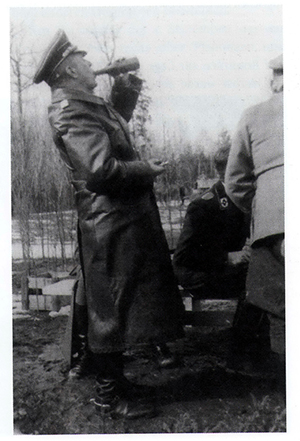
From autumn 1941 until the end of March 1942, Frevert was on leave in Berlin to treat a knee damaged in an accident. After his recovery, he did not return to Rominta, but was sent to the Netherlands, where he met the capitulation of Germany as commandant of The Hague. He spent some time in a camp for German prisoners of war, but was released from captivity on July 20, 1945. In the autumn of 1944, when the Red Army stood on the approaches to East Prussia, Frevert took his family to the West.
Nothing was known about Frevert's participation in punitive measures in the Belovezhskaya Pushcha until the publication in 2004 of the book by the Swiss researcher Andreas Gautschi "Walter Frevert. The Life of a Hunter " (Andreas Gautschi: Walter Frevert. Eines Weidmanns Wechsel und Wege. Nimrod-Verlag, Hanstedt 2004).
Immediately after his release from the camp, Frevert and his family settled in the town of Elze, south of Hanover. He worked as a night watchman and caught foxes, whose pelts he then sold on the black market. He also began to carry out projects to improve private forest areas. Having wisely concealed information about his activities in the Bialowieza Forest, Frevert had already taken a job as the head of the Murgtal forestry in the Black Forest in 1947. The denazification process that began soon after was virtually painless for Frevert. He managed to convince the commission of his reliability, and although some information about Frevert's activities during the war came to light, he was only demoted to forester.
In 1953, Frevert became the head of the Black Forest forestry of Kaltenbronn, where he began to work on the restoration of the red deer and forest game population. Over time, high-ranking officials from the occupation administration, diplomats, and industrialists began to come to Frevert for hunting again. Even the Emperor of Ethiopia, Haile Silassie I , was among the guests .
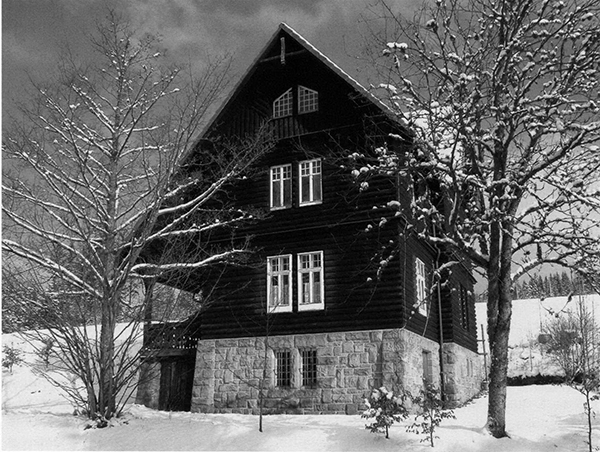
In December 1958, Frevert invited the former Vice-Chancellor of the Third Reich, von Papen, to go hunting, which caused discontent among his immediate superiors. The ensuing scandal raised the issue of "Göring's court foresters" for the first time, and Frevert was soon removed from his post.
Frevert continued to breed the Hanoverian Hound, heading the International Union of Fanciers of this breed.
Frevert's journalistic activity began in the mid-1930s. In 1935, he published a guide to breeding the Hanoverian hound (Die gerechte Führung des Hannoverschen Schweisshundes). In 1936, Frevert's book "Hunting Custom" (Jagdliches Brauchtum) was published, written on behalf of Goering, and had a significant influence on the development of hunting not only during the Third Reich, but also after the end of the war up to the present day. In addition, Frevert collaborated with the specialized hunting magazine "Game and Dog" (Wild und Hund). In the post-war years, Frevert published several books on the breeding and training of hounds, hunting customs, hunting signals (Die deutschen Jagdsignale und Brackenjagdsignale, 1951) and hunting jargon (Wörterbuch der Jägerei. Ein Nachschlagewerk der jagdlichen Ausdrücke, 1953). Frevert published several books of his own memoirs (Autumn Lasts a Whole Year/Herbst im ganzen Jahre bleiben, 1957; A Hunter's Life Brings Something New and Joyful Every Day/Das Jägerleben ist voll Lust und alle Tage neu, 1960; Rominta/Rominten, 1957, etc.). Frevert's books were popular and have been reprinted in recent years. In particular, in 2007, a collection of Frevert's works was published under the title "My Hunting Life" (Mein Jägerleben. Gesammelte Erzählungen des großen Waidmanns). In addition, Frevert hosted radio programs dedicated to hunting and had a reputation as a typical, even somewhat caricatured, German forester and hunter with his invariable hunting hat and monocle.
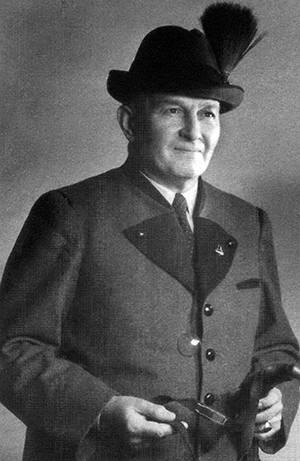
Frevert's versatility was also expressed in the fact that he developed several types of hunting knives and tested new hunting suits on himself.
Frevert was a supporter of finishing off wounded animals hunted by hounds with cold weapons. He developed his own version of a hunting knife. The patent application for the Waidblatt nach Forstmeister Frevert (Hunting knife of forester Frevert) was filed on May 8, 1936. The knife was a good seller among hunters. By the way, this blade, which costs a lot of money (like several other models, to the design of which Frevert had a hand), is still produced by the famous German knife company "Puma".
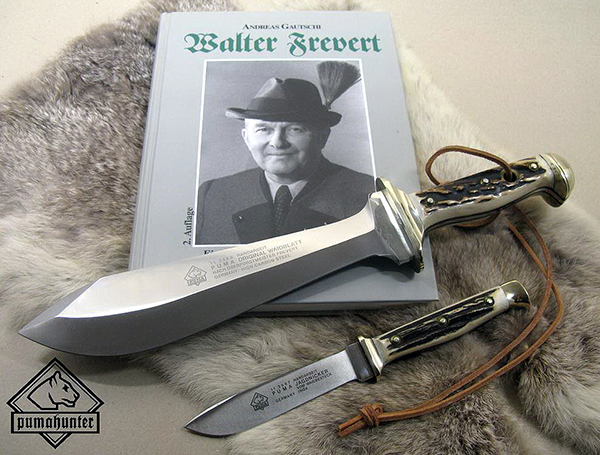
Frevert died in a hunting accident on July 30, 1962. A police investigation concluded that Frevert's probable cause of death was suicide. However, the official cause of death was listed as an accident. This was done so that his family could claim insurance. Frevert's funeral on September 2 was attended by many people, including high-ranking officials. In 1964, a forest department was named after him, and a memorial stone was erected a few hundred meters from the site of his death.
Frevert enjoyed the highest reputation among German hunters for decades. It was only in the early 2000s, with the publication of research by the Germans Wilhelm Bode and Elisabeth Emmert, as well as the Swiss Andreas Gautschi, that Walter Frevert's activities during World War II became known to the general public.
* Forstschutzkommando (Forstschutzkommando des Reichsforstmeisters) — forest protection team. A paramilitary unit created in February 1940 to patrol forests and protect logging operations in Poland. It numbered approximately 2,000 people. Later, Forstschutzkommando fighters took part in punitive operations against civilians in the occupied Soviet territories. The fighters wore Luftwaffe uniforms with the inscription "Forstschutzkommando" sewn onto their sleeves. In September 1943, the unit was renamed Forstschutzkorps.

Sources:
http://www.molodguard.ru/village06-05.htm
Wikipedia
Andreas Gautschi: Walter Frevert. A Weidmann's diet and exercise. Nimrod Verlag, Hanstedt 2004
